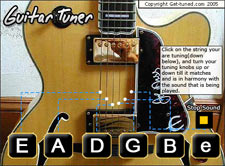

Its size was not as conducive to a full tone in the lower register. It was more suited to higher register writing, as in the viola 1 parts, as their sound was usually richer in the upper register. A smaller viola, nearer the size of the violin, was called a vertical viola or an alto viola. Large violas (tenors) were designed to play the lower register viola lines or second viola in five part harmony depending on instrumentation. Prior to the eighteenth century, violas had no uniform size. For centuries, viola makers have experimented with the size and shape of the viola, often adjusting proportions or shape to make a lighter instrument with shorter string lengths, but with a large enough sound box to retain the viola sound. The body of a viola would need to measure about 51 cm (20 in) long to match the acoustics of a violin, making it impractical to play in the same manner as the violin. Unlike the violin, the viola does not have a standard full size. For a child who needs a smaller size, a fractional-sized violin is often strung with the strings of a viola. Small violas typically made for children typically start at 30 cm (12 in), which is equivalent to a half-size violin. A full-size viola's body is between 25 mm (1 in) and 100 mm (4 in) longer than the body of a full-size violin (i.e., between 38 and 46 cm ), with an average length of 41 cm (16 in).

The viola is similar in material and construction to the violin. See also: Violin construction and mechanics Viola close up of bridge Paul Hindemith, who was a violist, wrote a substantial amount of music for viola, including the concerto Der Schwanendreher. The concerti by Béla Bartók, Paul Hindemith, Carl Stamitz, Georg Philipp Telemann, and William Walton are considered major works of the viola repertoire. William Walton, Bohuslav Martinů, Tōru Takemitsu, Tibor Serly, Alfred Schnittke, and Béla Bartók have written well-known viola concertos. Many of these pieces were commissioned by, or written for, Lionel Tertis. English composers Arthur Bliss, York Bowen, Benjamin Dale, Frank Bridge, Benjamin Britten, Rebecca Clarke and Ralph Vaughan Williams all wrote substantial chamber and concert works. In the earlier part of the 20th century, more composers began to write for the viola, encouraged by the emergence of specialized soloists such as Lionel Tertis and William Primrose. Examples include the symphonic poem Don Quixote, by Richard Strauss, and the symphony/concerto Harold en Italie, by Hector Berlioz.

The viola occasionally plays a major, soloistic role in orchestral music. The viola often plays the "inner voices" in string quartets and symphonic writing, and it is more likely than the first violin to play accompaniment parts. When viola music has substantial sections in a higher register, it switches to the treble clef to make it easier to read. Music for the viola differs from most other instruments in that it primarily uses the alto clef. The viola was popular in the heyday of five-part harmony, up until the eighteenth century, taking three lines of the harmony and occasionally playing the melody line. Today, the French use the term alto, a reference to its range. The French had their own names: cinquiesme was a small viola, haute contre was a large viola, and taile was a tenor. "Brazzo" was another Italian word for the viola, which the Germans adopted as Bratsche. The Italians often used the term viola da braccio meaning literally: 'of the arm'. The word viola originates from the Italian language. In the past, the viola varied in size and style, as did its names. The strings from low to high are typically tuned to C 3, G 3, D 4, and A 4. Since the 18th century, it has been the middle or alto voice of the violin family, between the violin (which is tuned a perfect fifth above) and the cello (which is tuned an octave below). Slightly larger than a violin, it has a lower and deeper sound. The viola ( / v i ˈ oʊ l ə/ vee- OH-lə, Italian: ) is a string instrument that is bowed, plucked, or played with varying techniques. Problems playing this file? See media help.


 0 kommentar(er)
0 kommentar(er)
